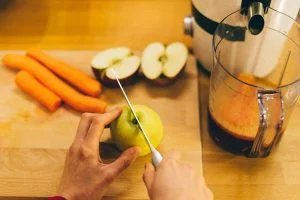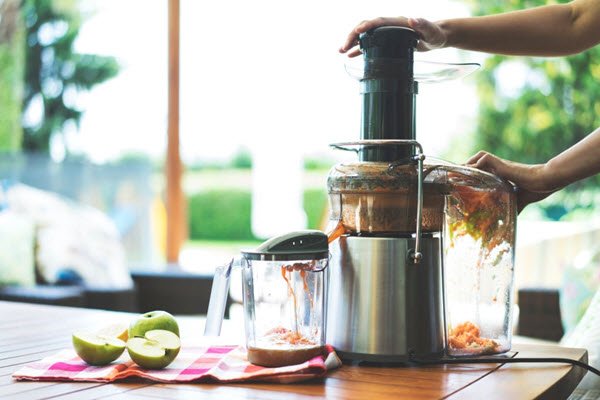There is no better way to add an abundance of fruits and veggies into your diet than by running them through your handy kitchen-top juicer. Before you know it you have a nutritious drink in hand, packed with vitamins and minerals.

Every time you juice though you may ponder on what could be done with the copious amounts of pulp left in the tray of your juicer.
Most often the leftovers would go to waste, but there are simple ways to use your fruit and vegetable pulp, so that going forward this particular foodstuff no longer needs to be dumped in the trash can.
What a waste to do this anyway! The pulp contains as many of the vitamins and minerals that are present in the juice, PLUS it contains ALL the fiber that was removed through the juicing process.
Get to it already, what should we do with the pulp?
Well, without further ado, here are 5 ingenious and easy ways to use the leftover pulp from your juicing:
- Make Tasty Snacks – As this is a snack and you may have a sweet tooth you can be forgiven for only using fruits for this method, but vegetables can be used to.
This method does not require any special kitchen or culinary equipment, simply spread the pulp into a flat layer – much similar to the shape of a pancake.
Then, pop it into the oven at a low to medium heat for an hour or two until the fruit has completely dried out. - Mix the Pulp into Soups – Every vegetable you can think of can be used in this example including broccoli, carrots, celery, kale, and many others.
The great thing about this method is that the pulp will help thicken the soup, not to mention the added vitamins and minerals that it is bringing to the table(You see what I did there):).
It is also possible to boil a variety of vegetable pulp in water to make a handy stock to be used in your other cooking endeavors. Don’t be afraid to experiment with this. Remember this stuff would have been thrown in the bin otherwise. - Add to Regular Meals – Just mix the pulp in with your usual meals during cooking times. For example, you can toss some vegetable pulp into a curry or pasta dish while it is cooking.
The rule of thumb here is to use common sense and not overdo it. You do not want to degrade the flavor of your meal. You may also have to add water to your dish if the pulp thickens it beyond your liking. - Add it to Granola Bars – Don’t you just love granola bars? There’s no reason why, especially if they’re one of your favorite snacks, that you cannot add some of that nutritious juicing pulp to your granola bar mixture.
Again, be sensible with how much you add. When you do so, add roughly around one-quarter of pulp for every three-quarters of granola mix. Click here for an AMAZING recipe for granola bars. - Blend with Smoothies – This is the most obvious way to use your leftover pulp. That way you are getting the total nutritional value of your fruits and veggies. The juice has been extracted and the leftovers can be tossed right into your next smoothie. Perfect!
Here are a few tips: Add a little extra coconut water to make up for the added pulp. If you’re adding veggie pulp then you may need to add an extra sweetener like a banana or apple to mask the bitter taste of some greens.
Also, make sure to use the pulp as soon as possible. If you cannot do this then it is possible to freeze it for later use.
Now, obviously all the methods above, and the use of juicing pulp, are not going to match your fresh fruit and vegetables but you may be one of a growing section of society that hates to waste food. For this reason, it is worthwhile to make a conscious effort not to do so wherever possible.
In conclusion, if you cannot use any of the ideas above then at the very least add the juicing pulp to your compost heap, where the fibrous pulp will break down very quickly and interfuse your compost with numerous nutrients.
The above was an added bonus – tip number six.
Now, Get Juicing!

